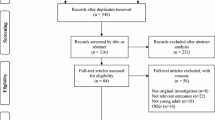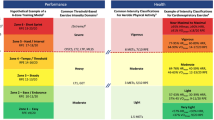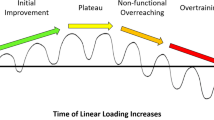Summary
The Harvard step test (modified for women) and a modified AAHPER test battery were performed by 144 White and Coloured student teachers, of whom 45 were students of physical education (PE). The rapid fitness index (RFI) was calculated for the Harvard step test and a composite criterion of fitness was derived from the results of the seven tests which comprise the AAHPER test battery.
For men and for women there was a highly significant correlation between the two estimates of physical fitness (RFI and AAHPER criterion) and a good correlation between the criterion and each of the individual AAHPER tests, the highest being with the standing broad jump. The correlation between RFI and individual AAHPER tests was poor in men but good in women. In both sexes the highest correlation was with the 600-yard run.
In general, both men and women PE students were fitter than their controls but there was no consistent difference between White and Coloured students in the results of the fitness tests although the White men and women were taller and heavier. The observed differences are probably not due to race but to different degrees of physical activity.
Similar content being viewed by others
References
American Association for Health, physical Education and Recreation: Youth fitness test manual. Washington, D. C.: Aahper 1958.
Arnett, C.: The purdue motor fitness test batteries for senior high school girls. Res. Quart. Amer. Ass. Hlth phys. Educ.33, 323–328 (1962).
Barrow, H. M.: Test of motor ability for college men. Res. Quart. Amer. Ass. Hlth phys. Educ.25, 253–260 (1954).
Brouha, L., A. Graybiel, andC. W. Heath: The step test: a simple method of measuring fitness for hard muscular work in adult man. Rev. canad. Biol.2, 86–91 (1943).
Campbell, W. R., andR. H. Pohndorf: Physical fitness of British and United States children. Phys. Educ.53, 48–56 (1961).
Chrastek, J., I. Stolz, andL. Samek: On determination of physical fitness by the step test. J. Sport Med. (Torino)5, 61–66 (1965).
Cureton, T. K.: Physical fitness appraisal and guidance. St. Louis: Mosby 1947.
,W. J. Huffman, L. Welser, R. W. Kireilis, andD. E. Latham: Endurance of young men: Analysis of endurance exercises and methods of evaluating motor fitness. Washington, D. C.: Society for Research in Child Development 1945.
De Vries, H. A., andC. E. Klafs: Prediction of maximal oxygen intake from submaximal tests. J. Sport Med. (Torino)5, 207–214 (1965).
Falls, H. B., A. H. Ismail, D. F. Macleod, J. E. Wiebers, J. E. Christian, andM. V. Kessler: Development of physical fitness test batteries by factor analysis techniques. J. Sport Med. (Torino)5, 185–197 (1965).
Fowler, W. M., andG. G. Gardner: The relation of cardiovascular tests to measurements of motor performance and skills. Pediatrics32, 778–789 (1963).
Gallagher, J. R., andL. Brouha: Dynamic physical fitness in adolescence. Yale J. Biol. Med.15, 657–658 (1943).
: Physical fitness: its evaluation and significance. J. Amer. med. Ass.125, 834–838 (1944).
Gross, E. A., andJ. A. Casciani: The value of age, height, and weight as a classification device for secondary school students in the seven Aahper youth fitness tests. Res. Quart. Amer. Ass. Hlth phys. Educ.33, 51–58 (1962).
Havlicek, F. J.: Speed sit-ups. Res. Quart. Amer. Ass. Hlth phys. Eduo.15, 75–77 (1944).
Hettinger, T., N. C. Birkhead, S. M. Horvath, B. Issekutz, andK. Rodahl: Assessment of physical work capacity. J. appl. Physiol.16, 153–156 (1961).
Karpovich, P. V.: Physiology of muscular activity. 4th ed. Philadelphia-London: Saunders 1953.
Knuttgen, H. G., andK. Steendahl: Fitness of Danish school-children during the course of one academic year. Res. Quart. Amer. Ass. Hlth phys. Educ.34, 34–40 (1963).
Mohr, D. R.: The measurement of certain aspects of the physical fitness of college women. Res. Quart. Amer. Ass. Hlth phys. Educ.15, 340–349 (1944).
Montoye, H. J.: The “Harvard step test” and work capacity. Rev. canad. Biol.11, 491–499 (1953).
Nicks, D. C., andE. A. Fleishman: What do physical fitness tests measure? A review of factor analytic studies. Educ. psychol. measur.22, 77–95 (1962).
O'Connor, M. E., andT. K. Cureton: Motor fitness tests for high school girls. Res. Quart. Amer. Ass. Hlth phys. Educ.16, 302–314 (1945).
Olree, H., C. Stevens, T. Nelson, G. Agnevic, andR. T. Clark: Evaluation of the Aahper youth fitness test. J. Sport Med. (Torino)5, 67–71 (1965).
Ponthieux, N. A., andD. G. Barker: Relationship between socio-economic status and physical fitness measures. Res. Quart. Amer. Ass. Hlth phys. Educ.36, 464–467 (1965).
Powell, E., andE. C. Howe: Motor ability tests for high school girls. Res. Quart. Amer. Ass. Hlth phys. Educ.10, 81–88 (1939).
Rodahl, K., P.-O. Åstrand, N. C. Birkhead, T. Hettinger, B. Issekutz jr., D. M. Jones, andR. Weaver: Physical work capacity: a study of some children and young adults in the United States. Arch. environm. Hlth2, 499–510 (1961).
Seltzer, C. C.: Anthropometric characteristics and physical fitness. Res. Quart. Amer. Ass. Hlth phys. Educ.17, 10–20 (1946).
Sloan, A. W.: Effect of training on physical fitness of women students. J. appl. Physiol.16, 167–169 (1961).
: Physical fitness of college students in South Africa, United States of America, and England. Res. Quart. Amer. Ass. Hlth phys. Educ.34, 244–248 (1963).
: Physical fitness of Cape Town high school children. S. Afr. med. J.40, 682–687 (1966).
, andE. N. Keen: The harvard step test of physical fitness. S. Afr. J. Sci.55, 113–116 (1959a).
: Physical fitness of oarsmen and rugby players before and after training. J. appl. Physiol.14, 635–636 (1959b).
Author information
Authors and Affiliations
Additional information
The work upon which this paper is based forms part of a thesis submitted for the degree of Doctor of Philosophy of the University of Cape Town.
Rights and permissions
About this article
Cite this article
Sloan, A.W. Comparison of tests of physical fitness of student teachers at Cape Town. Int. Z. Angew. Physiol. Einschl. Arbeitsphysiol. 23, 24–33 (1966). https://doi.org/10.1007/BF00716279
Received:
Issue Date:
DOI: https://doi.org/10.1007/BF00716279




